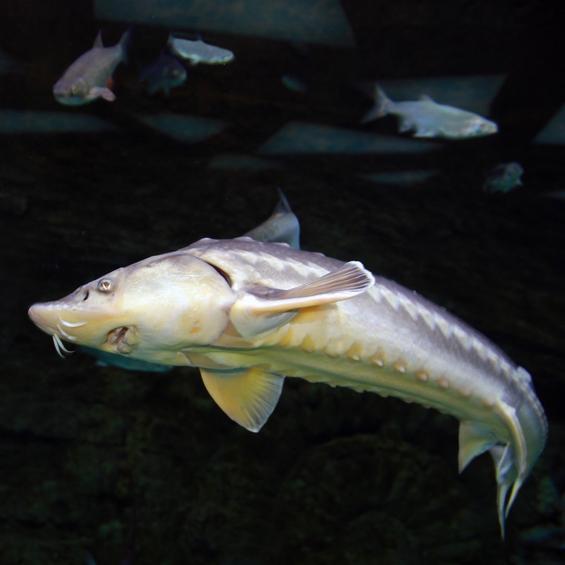The 5 Oldest Animals in the World: Ancient Extant Species


Some creatures seem to be almost as old as planet Earth itself. Although they aren't, it's true that some animal species have survived the most extreme circumstances, from natural disasters to mass extinctions. They are often referred to as "living fossils".
They have been able to survive by evolving particular traits to adapt to new situations and stand firm on their feet. These ancient extant species have developed amazing skills and strange physical characteristics. Some of them resemble ancient, now-extinct species, which is why they look so odd to us.
In this AnimalWised article we have compiled a list so that you can get to know the 5 oldest animals in the world. These ancient extant species, or living fossils, are all way older than human beings.
Frilled shark
The frilled shark (Chlamydoselachus anguineus) looks like a strange mixture of shark and eel, and it descents from sharks that inhabited the Earth since the late Jurassic period, that is, for over 150 million years. Frilled sharks exhibit some ancient characteristics, which is why they have been called living fossils.
The frilled shark has a powerful jaw with 300 teeth distributed in about 25 rows. It lives in the depths of the ocean, although recently a couple of specimens were found along the coasts of Australia and Japan. They are physically quite formidable, although not exactly pretty. Imagine if a really ugly shark had a baby with an even uglier eel. The frilled shark is a typical creature of children's nightmares, and one of the oldest animal species in the world.
Interestingly, the frilled shark is the animal with the longest gestation period; a female frilled shark can keep her slow-growing embryos for over three years. By the way, the mammal with the longest gestation is the elephant; discover how long is an elephant's pregnancy here.

Lamprey
Lampreys are even more ancient that frilled sharks. There are many species of lampreys, although they all belong to the order of Petromyzontiformes and are characterized by being jawless fish; in other words, they have a hole full of dozens of teeth for a mouth, which are used to hold other fish while sucking their blood. Although they resemble each other, lampreys and eels are not related.
Unlike other fish, lampreys don't have scales, which adds to their parasitic, gelatinous and slippery appearance. Their simple brain is similar to that of early vertebrates, and lamprey fossils have been found in the Mazon Creek fossil beds dated from 300 million years ago, which places them among the oldest animal species in the world.

Sturgeon
The sturgeon family, scientifically known as Acipenseridae, dates from more than 200 million years ago; sturgeons are some of the oldest animals in the world. There are 27 species of sturgeon, all with roughly similar characteristics.
Sturgeons have survived all kinds of events, but some sturgeon species are in danger of extinction. The European sea sturgeon, which lives mostly in the Black and Caspian Seas, is critically endangered. This big fish (it can reach more than 5 m) is normally quite long-lived, as it can reach 100 years old. One of the reasons for their vulnerability is their eggs, which are highly valued as caviar. Luckily, now it is a protected species.

Ant from Mars
Let's start by clarifying that these ants are not literally from Mars; this ant species, known scientifically as Martialis heureka, was discovered in 2000 in the wet soils of the Amazon rainforest.
Scientists claim that the origins of the ant from Mars can be dated to more than 130 million years ago. In this list of the oldest animals in the world, the ant from Mars is the sole representative of terrestrial life, as most of the other ancient extant species are sea creatures.
These ants are known as "martians" because the species looks so remarkably different from all other ants that it might as well be from another planet. In fact, it is believed that it evolved distinctly from the ancestors of all other ants. They are predatory animals, and they are also blind.

Horseshoe crab
In 2008, Canadian scientists found a new fossil of a horseshoe crab. This family, the Limulidae, are considered living fossils because they haven't changed much in about 450 million years. Imagine how difficult it must be to remain the same after so many changes in the environment. Horseshoe crabs have earned their name; they are all knightly warriors.
A fun fact is that this animal, even though it spends most of its life buried in the sand, is more related to arachnids like spiders or scorpions than crabs. Their blood is blue, because it doesn't have hemoglobin. Atlantic horseshoe crabs are used in medical testing, and they have been so extensively harvested for pharmaceutical purposes that it is now a near threatened species.

These are the 5 oldest animals in the world; as you can see, ancient extant species are quite interesting and strange. Did we miss your favorite? Tell us in the comments section!
If you want to read similar articles to The 5 Oldest Animals in the World: Ancient Extant Species, we recommend you visit our Facts about the animal kingdom category.










